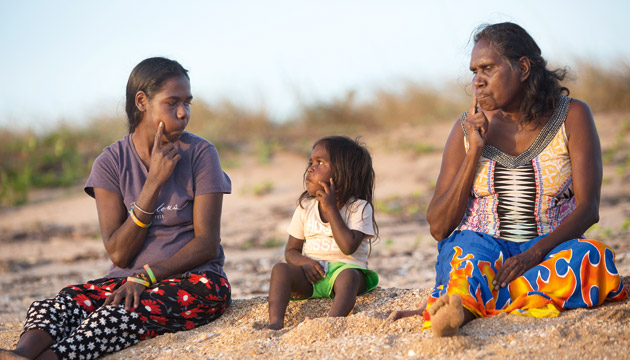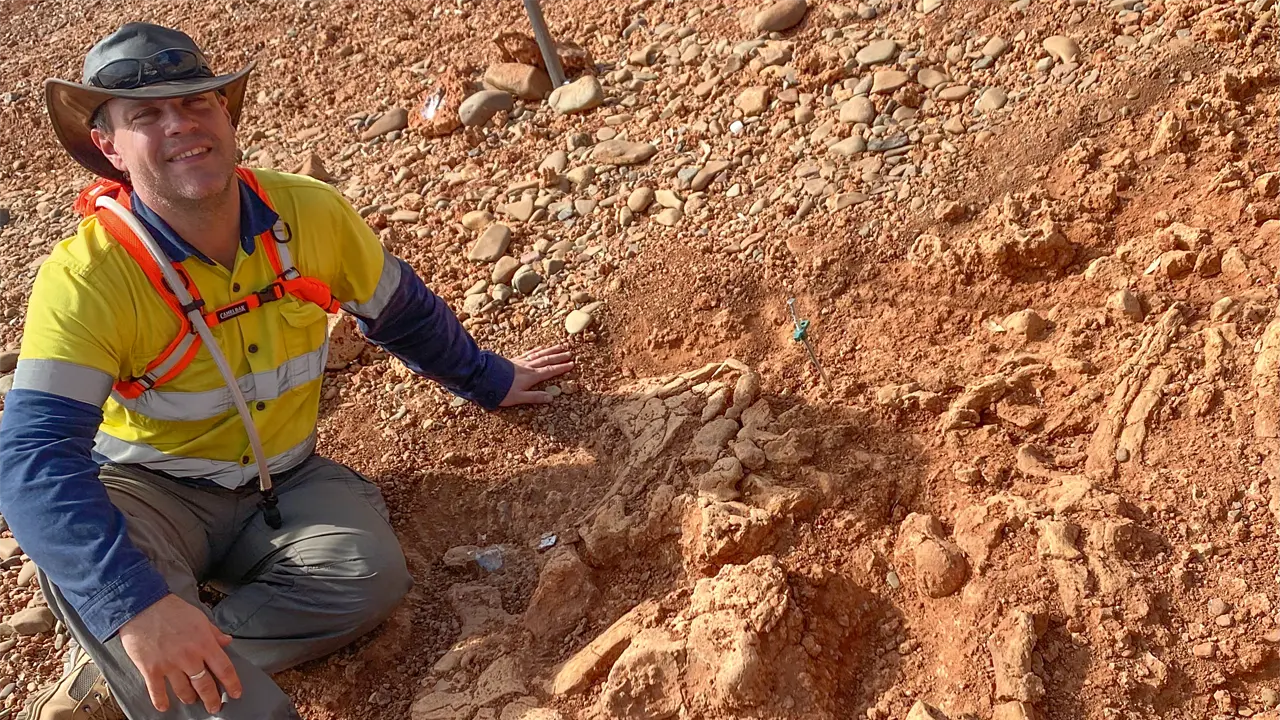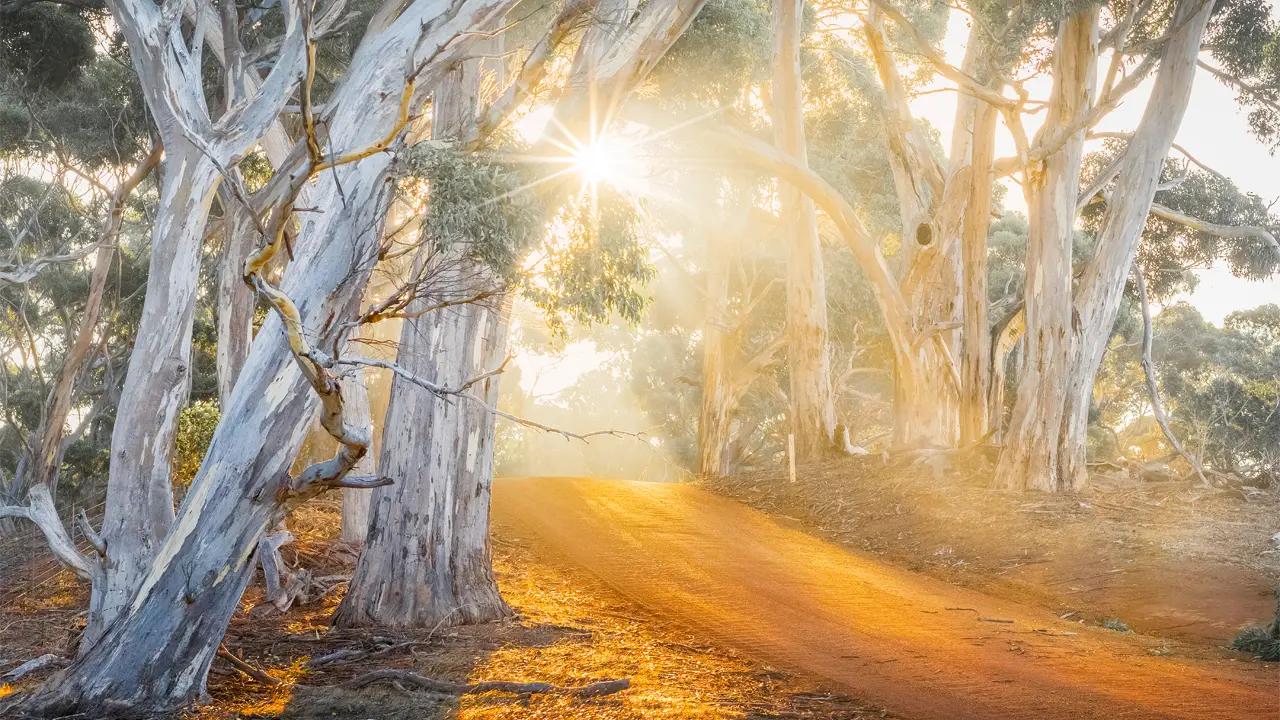A rich tradition of sign language among the Indigenous people of Arnhem Land is being documented and preserved by linguists and anthropologists.
Story + Photos David Hancock
As afternoon light skips across the waters of the Arafura Sea bathing the sands of Elcho Island in a golden glow, Doris Yethun Burarrwanga moves lithely over the beach teaching her granddaughters the dance of baru, the saltwater crocodile. Twelve-year-old Grace Barurrwanga glides with the confidence of a young girl who has participated in many ceremonial events while her cousin, two-year-old Rekisha Gaykamangu, watches with curiosity and wonder, mimicking their movements with childish gusto.
Baru is the main totem of the Gumatj clan of north-eastern Arnhem Land and the crocodile dance is performed at major ceremonies. Doris bends over and extends her arms forward and parallel to the beach and dips her hands. This is the ‘sign’ of the baru, woven into dance. They spend 20 minutes dancing before moving on to search for maypal (shellfish) among rocks. Later, the group, including Rakisha’s mother Abby Dhamarrandji, settles around a fire to eat as the sun goes down.
They talk about clan totems, relationships and country in Yolngu Matha, the main language of north-eastern Arnhem Land. It is a conversation aimed at Rekisha and Grace to embed Yolngu traditions. Interestingly, hand signs accompany words and phrases. For example, the word ‘fire’ (gurtha in Yolngu Matha) is expressed as breath being expelled from the mouth with a hand moving from the lips, ‘water’ (gapu) is depicted as one cheek inflated while being tapped by the index finger. Most words have a corresponding sign and just as words are linked in sentences, hand signals are joined to create complex phrases, capable of expressing the full range of human experience.
Traditionally, Indigenous children of Arnhem Land grew up using this alternate language of hand signals in concert with everyday conversation and, importantly, in situations when cultural protocols demanded it.
“In the past, every Yolngu person whether they could hear or not, used sign [language],” Doris says. “Children grew up understanding hand signs because they see people signing all the time. Signing is used in dancing, in bungul (ceremonies), with hunting and also when there is a need for quietness.” Those times include initiation and mortuary ceremonies – in some groups, mortuary conventions require periods of public silence that may last for years. There are also certain kinds of avoidance relationships in Indigenous culture where two people are not permitted to communicate directly.
This alternate language is also useful in everyday situations such as when groups of people travel over bumpy or corrugated roads in noisy vehicles, while in boats and light aircraft, and when communicating over distance. Young Yolngu people are also expected to remain quiet out of respect, when visiting sacred sites and in the homelands of other families. Hand signs have always been a preferred method to make secret assignations.
This story excerpt is from Issue #120
Outback Magazine: August/September 2018










